Lankan entrepreneur produces high-quality biodegradable bags to protect the environment
The damage caused to the global environment by dumping of non-biodegradable polythene bags has posed a global threat to the environment as polythene does not perish even after 500 years, according to scientists.
Many Third World countries have so far not come up with a plausible solution to counter the use of polythene.
The problem of polythene dumping has grown over the years as garbage collecting centres particularly in Sri Lanka have not come up with a solution towards the safe disposal of polythene. Everything sold at grocery stores or supermarkets is wrapped up in polythene bags.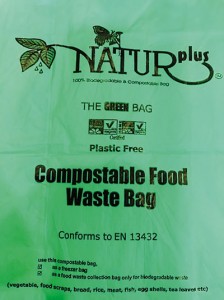
A Sri Lankan entrepreneur through his company Plastic Packaging (Pte) Ltd based at Ratmalana has now come up with a novel solution to address the polythene menace by manufacturing degradable bags using a different kind of chemical that is not harmful to the environment.
Although these bags look similar to those of polythene the difference is noticeable. These biodegradable bags perishes within a given period and pose no threat to the environment.
In an interview, Plastic Packaging (Pte) Ltd Chairman Mervyn Dias said his company has been manufacturing these polythene bags for export to the UK during the past three decades.
“We have specialized in manufacturing thin polythene bags for exports. When we first started manufacturing bags, it used to be 10 microns but now we manufacture three microns bags which makes the polythene cover very slim. These are the normal type of polythene bags that does degrade,” he said.
Manufacturing of polythene bags for export was good enough to earn money but the negative impact it had on the environment was tremendous. “Therefore we decided to embark on a project to manufacture bags that are environmentally friendly and that can degrade over a period of time.
We started this project about 20 years back by manufacturing oxo biodegradable and compost degradable bags.However we realized the additive used in the manufacture of these bags also took a long time to degrade as it had some polythene element in it.
Thereafter we experimented further and manufactured a compost and biodegradable bags in 2006 without any polythene content which was a starch based product. But there was a technical glitch where we could not bring the thickness of the bag to a low level due to non availability of technology.
Further experiments done over the years yielded positive results with the importation of a new chemical to bring down the thickness of the bag,” he explained noting that the these biodegradable bags were exported to the UK in 2009.
He said the bags are now being used in UK households to dispose their garbage in an environmentally friendly manner.
“The compost and biodegradable bags were first distributed free of charge to customers at supermarkets so that they can hand them over to waste collectors or else they themselves can even compost it at home. But after some time supermarkets stopped giving these bags free to householders.” 
A household requirement of these bags is about 10-15 bags which is quite sufficient for a month. The bags comes in different sizes but the bags used for collecting garden waste is much bigger.
“We export both type of bags to the UK in large quantities. A small bag will cost around Rs. 9 and a bigger garbage bag will cost around Rs. 30,” he added.
Asked whether it was feasible to sell these bags in Sri Lanka, he said a different type of bio degradable bags is sold in Sri Lanka as well. However it is not available at supermarkets because they are not sure whether it will sell or not.
The other advantage the consumers have is that these bags can be even used as freezer bags to store vegetables in a deep freezer. Thereafter the bags can be used to dispose kitchen waste, etc.
Referring to Municipal City garbage collectors, he said they have been instructed not to collect any polythene bags from households which has caused a problem The garbage collector does not know the difference between a compost biodegradable bag and a polythene bag.
He said the disadvantage of using polythene bags was that the throw away refuse in such bags does not perish along with the bag. He said the solution to the problem was by using biodegradable bags that can be taken away by garbage collectors to be dumped in a compost plant.
“We have also informed the Waste Management Authorities on the benefits of using biodegradable bags to dispose refuse without aggravating the problem.
But so far we have not received any response from them,” he said
Referring to a certification process by an international body called Vinbo in Belgium, he said the biodegradable bags are subject to a rigorous test to determine whether it contains any element of polythene and whether these bags are compostable or not.
“If such bags contain any semblance of polythene, the certification process is rejected debarring such products to be exported to the European Union countries.”
He said four tests are carried out to determine the certification process. The first one is that biodegradable bags have to disintegrate within a period of four months and the remaining small pieces have to go through a 2-2 mm mesh.
The second test was that the bags have to completely disintegrate within 180 days otherwise they are not considered as compostable bags.
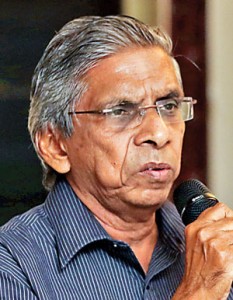
Mervyn Dias
The third test is to ascertain whether the bags contain any heavy metal that contaminates the soil.
The fourth test is checking out the quality of final compost and eco-toxicity. This involves testing to see if the germination and production of plants are not affected by the influence of composted packaging.
Once the above conditions are satisfied the bag is 100 per cent eco-friendly and certification is given.
The OK compost label certification guarantees compliance with EN 13432 and OK compost logos that are printed on the bags where customers can identify the compostable and biodegradable bags.
The small kitchen bags can hold a weight of 2-3 kg whereas a garden bag can carry a weight of 7-8 kg.
Asked for future projections of the company, Mr. Dias said that plans are underway to export biodegradable bags to supermarkets in France as well. (Jayampathy).
http://www.sundaytimes.lk/170702/business-times/lankan-entrepreneur-produces-high-quality-biodegradable-bags-to-protect-the-environment-247724.html

Staggering number arrested over illegal waste disposal in West. Prov.

Police reveal that 144 individuals have been charged and summoned to court over the illegal dumping of garbage in the Western Province in the space of two days.
They added that these charges were made during raids carried out by the army and the police department on the 26 and 27 of June.
The numbers of arrestees are as follows;
– Colombo (27)
– Nugegoda (37)
– Mount Lavinia (05)
– Gampaha (29)
– Kelaniya (14)
– Negombo (22)
– Kalutara (01)
– Panadura (09)
Police Department added that the arrested have been charged, and that such raids will be carried periodically in the future.
Source – 30/06/2017, Ada Derana, See more at – http://www.adaderana.lk/news/41635/staggering-number-arrested-over-illegal-waste-disposal-in-west-prov

Plans underway to set up Indo-Lanka solar power plant in Trinco

Sri Lanka is to kick-start the process of setting up a solar power plant in Trincomalee following discussions with India, which is partnering the Government in the initiative, Indian media reported.
“The next step would be to undertake a feasibility study and do the groundwork,” spokesman of the Ministry of Power and Renewable Energy Sulakshana Jayawardena told The Hindu recently.
In April the governments of Sri Lanka and India signed a Memorandum of Understanding, for cooperation in a host of development projects including the setting up of a Liquefied Natural Gas (LNG) plant in suburban Colombo and a solar power plant in Sampur, Trincomalee.
“We have the required land to set up the 50 MW solar plant envisaged in the MoU. We have to now work out the process of executing the project, in consultation with India,” Mr. Jayawardena said.
Sri Lanka had initially planned to set up a coal power plant in Sampur, through an international joint venture with India’s National Thermal Power Corporation. However, in September 2016 the Power Ministry scrapped the project citing environmental concerns.
A month later, Prime Minister Narendra Modi met President Maithripala Sirisena in Goa, on the side-lines of the BRICS summit, where he flagged the possibility of New Delhi partnering with Colombo in LNG and green energy projects.
Source – 29/06/2017, Times Online, See more at – http://www.sundaytimes.lk/article/1026706/plans-underway-to-set-up-indo-lanka-solar-unit

Residents face issues due to dumping of garbage to Dickoya

Residents have referred to the many issues they are facing due to the dumping of garbage to Dickoya during the night with the trash issue in the Hatton town aggravating.
The Hatton Police have launched an operation to nab persons who indiscriminately dump garbage. As a result the residents claim that certain groups are induced to discarding garbage to Dickoya during the night. As a result they pointed out that water in the Castlereigh Reservoir is being polluted due to the flow of water from Dickoya contaminated with garbage. Thus there is an imminent danger of the people using this water contracting diseases as well as the extinction of aqua life.
The residents are calling on the authorities to pay their attention to this matter and find a quick solution.
Source – 28/06/2017, ITN News, See more at – https://www.itnnews.lk/category/local-news/

Bill banning unauthorized fishing practices to be passed

The new bill on fisheries and marine life will be presented to the parliament on the 6 of July.
Minister of Fisheries, Mahinda Amaraweera stated that the bill will allow strict legal action to be taken against individuals who will utilize unauthorized fishing practices.
The statements were brought out during a press conference held in Negombo.
Source – 29/06/2017, Ada Derana, See more at – http://www.adaderana.lk/news/41617/bill-banning-unauthorized-fishing-practices-to-be-passed-

Elephant calf rescued


Tortoise catch sheds light on another front in criminal wildlife trade

Detection of a massive number of star tortoises on a fishing boat off Kalpitiya has raised fears that smugglers are plundering Sri Lanka’s reptiles from the wild for the illegal trade.
Recently, two suspects were held with 2,089 star tortoises from India in a fishing boat intercepted by the navy last Sunday at five nautical miles off Kalpitiya during a patrol. Twenty one of the star tortoises are now dead and the rest are in the care of a facility under the Zoological Gardens.
The navy spokesman Lieutenant Commander Chaminda Walakuluge said:
“This was the first time we detected tortoise smuggling at sea
The suspects were handed over to the customs and later remanded after being produced in court. Initial inquiries have shown that the tortoises were to be sold at US$50 each (Rs 7,664), after being smuggled out of Sri Lanka.
Customs sources suspect the star tortoises are to be re-exported. The customs media spokesman Dharmasena Kahandawa said the suspects will be questioned.
The former customs deputy director, Samantha Gunasekara, told the Sunday Times that foreign and local tortoises are traded illegally to Thailand, Indonesia and Singapore.
Sometimes, these reptiles are brought to Sri Lanka from Chennai to be traded to Singapore from where they reach Europe, including Germany.
Mr Gunasekara who was also the founder of the customs Bio Diversity Protection Unit, said the origin of the star tortoises needs to be established because if they are released into the wilds they can destroy the existing tortoise populations of Sri Lanka.
Director General of the Zoological Department, Ms Dammika Malsinghe, said tests will be done. Six of the 2,089 star tortoises were dead at first and by Friday morning 21 had perished, she said. The remaining 2,038 tortoises are being cared for at a facility in Gonapola, Horana.
“The zoological gardens has enough tortoises, we housed the tortoises temporarily to check their health, while Rajarata University Students and Dr Anslem De Silva will do DNA testing to check whether the animals are of Indian origin or from Sri Lanka,” she said.
Dr Anslem de Silva, regional chairman of Species Survival Commission of the IUCN and a well known herpetologist, said he will have an assessment by next week.
He explained that it was difficult to establish the morphological differences of the star tortoises of both Sri Lanka and India.
Additional reporting by Padma Kankanamge in Kalpitiya
Source – 25/06/2017, The Sunday Times, See more at – http://www.sundaytimes.lk/170625/news/tortoise-catch-sheds-light-on-another-front-in-criminal-wildlife-trade-246603.html

Waratenna-Hakkinda declared an EPA after long fought battle by environmentalists
The battle was long and hard, with victory being achieved this week, as Waratenna-Hakkinda in Kandy, home of a critically-endangered freshwater fish, being declared an Environmental Protection Area (EPA).
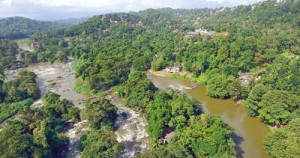
The spectacular Waratenna-Hakkinda area in Kandy
Environmentalists, foremost among whom is researcher Pradeep Samarawickrama are agog with excitement as President Maithripala Sirisena in his capacity as Environment Minister issued the Gazette Extraordinary 2024/06 dated June 19 and titled ‘Order to declare the Waratenna-Hakkinda EPA’ under Section 24C of the National Environmental Act.
Now Waratenna-Hakkinda joins Negombo’s Muthurajawela wetland; Nuwara Eliya’s Lake Gregory; Bulathsinhala’s Walawwewatta Waturana; Moratuwa’s Bolgoda Lake; Sri Jayewardenepura-Kotte’s Talangama Tank; Moneragala’s Maragala mountain range; Matale’s Knuckles mountain range; and Kandy’s Hantane mountain range as an EPA.
In these EPAs, the Central Environmental Authority ‘exercises, performs and discharges any powers, duties, functions related to planning and development’.
The Waratenna-Hakkinda EPA encompasses a one-kilometre stretch of the Mahaweli river which covers its narrowest point (three-metre width) and its widest point (1.7km-width), said environmental lawyer Jagath Gunawardene, explaining that the landmarks are, on one end the Getambe bridge and on the other, the Dodanwala suspension bridge.

Environmental lawyer Jagath Gunawardena
Referring to the importance of the area, he said that within the widest spot of the Mahaweli there are several rocky islands and there is a unique geological formation here.
“There is high biodiversity and high endemism with uniquely-adapted species, while the area is also of historical, cultural and religious value,” reiterated Mr. Gunawardena, ticking off the details on his fingers.
The area came under the spotlight when Mr. Samarawickrama in early 2011 found the critically-endangered gadeya or Green Labeo (Labeo fisheri) here and the Sunday Times launched a campaign seeking to protect Waratenna-Hakkinda.
The gadeya, a herbivorous fish, similar to the carp, is usually mud green or olive green and has a long, robust body with a mouth turned down. While it feeds on algae, it requires clear flowing water and a rocky bottom which aids the growth of algae.
Earlier it had been found in the Mahaweli system, at Polgolla and near Victoria, but with the construction of dams under the accelerated Mahaweli Scheme, its habitats had been submerged and changed.
Back in 1980, environmental scientist Dr. Ranil Senanayake had predicted that the Polgolla and Victoria projects would destroy the gadeya’s habitat while in 1990, Dr. Eric Wikramanayake had said that this fish may already be extinct.
The gadeya is the “most” significant faunal species inhabiting this area, said Mr. Gunawardena, listing some of the rare aquatic plants as six species of the endemic Podostemaceae, the endemic Cryptocoryne species threatened with extinction, the Lagenandra species and also a small community of yak-erabadu trees.

Prof. Deepthi Yakandawala
It was Prof. Deepthi Yakandawala of the Department of Botany, Faculty of Science, Peradeniya University who at that time pinpointed the dangers faced by the remarkable flowering plants of the family Podostemaceae and also the popular aquarium plants, the ‘water trumpet’ (Cryptocoryne, commonly known as Athi-udayan) due to the threats to this habitat.
She reiterated that six of the 10 species of the aquatic genus Cryptocoryne represented in Sri Lanka are critically endangered, while of the other four, three are endangered and one is vulnerable.
Waratenna-Hakkinda is also replete with birds, butterflies and dragonflies and is an area where a large number of fruit bats (flying foxes) roost, the Sunday Times learns, while the area is of high interest to geology as well as biology students.
“It is a study site,” says Mr. Gunawardena, pointing out that the aesthetic value of Waratenna-Hakkinda opens up the potential for eco-tourism.
However, he is emphatic that eco-tourism should not come in the form of putting up hotels, which is a clear “no, no” but more on the lines of walk-trails etc. There is breathtaking beauty around the Dodanwala suspension bridge.
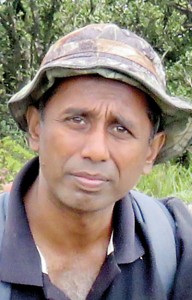
Researcher Pradeep Samarawickrama
The area was under severe threat from the hotel industry, housing, unauthorized filling and a mini-hydro power project which resulted in devastating dynamiting which killed the gadeya.
Environmentalists opened the eyes of the public as well as the authorities to the danger of such unplanned and unchecked development in the area.
The Sunday Times highlighted these issues in a series of articles starting with ‘Near-extinct fish faces death by dynamite’ on July 24, 2011; followed by ‘Now vital aquatic plants face similar fate as fish’ on August 7, 2011; and ‘CEA urged to protect endangered species area in Getambe’ on May 13, 2012.
Source – 25/06/2017, The Sunda Times, See more at – http://www.sundaytimes.lk/170625/news/waratenna-hakkinda-declared-an-epa-after-long-fought-battle-by-environmentalists-246593.html

Tough new campaign to remove unauthorised structures on beaches
The Coast Conservation Department has launched a vigorous campaign to remove unauthorised constructions on beaches, Director General Prabath Chandrakeerthi told the Sunday Times.
He said so far more than 1,600 unauthorised structures had been issued notices, warning their occupants that if they failed to remove them, the Department would deploy its personnel to demolish them.
“We will have the support of the Special Task Force to provide security for the operations,” he said.
Mr. Chandrakeerthi said the campaign would target the beach stretch from Moratuwa to Mount Lavinia in the next two weeks and the next phase would cover the beach stretch from Mount Lavinia to Uswetakeiyawa in Wattala.
Under Sri Lanka’s Coast Conservation laws, the Department is empowered to remove unauthroised structures within 300 meters from the beach, the Director General said.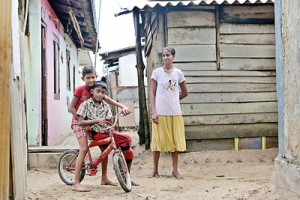
He said that among those unauthorised structures to be demolished are 49 temporary houses on the Mt Lavina and Moratuwa beaches. The residents are 2004 tsunami victims. Though they have been provided with alternative houses away from the beach, they have returned to their original places and put up temporary houses.
Mr. Chandrakeerthi said the Department would give the occupants two weeks to produce documents to prove the legality of the structures or temporary houses.
If the occupants produce the documents, their cases would be referred to the Defence Secretary under whose purview the Department comes. They are also entitled to make an appeal.
He said if the appeals are rejected, the occupants would have to remove the structures within two weeks. If they failed to do that, the department would demolish the structures and the occupants would have to pay the demolition cost.

Unauthorised structures along the Dehiwela Mount Lavinia beach. Pix by Sameera Weerasekera

Source – 25/06/2017, The Sunday Times, See more at – http://www.sundaytimes.lk/170625/news/tough-new-campaign-to-remove-unauthorised-structures-on-beaches-246613.html

Palmyrah trees vanish overnight

Thousands of Palmyrah trees have been felled and smuggled out of Talaimannar to be sold elsewhere, villagers said. They have demanded that this illegal act should be stopped and legal action should be taken against the culprits.
They complained that a large number of palmyrah trees were being felled in Talaimannar, Olaithoduwai, Kaddukkarankudiyiruppu, Thulukuddiyiruppu, Pesalai and Karisal even during day time and were being smuggled out by night without the knowledge of the owners.
People also complained that unidentified groups are illegally felling palmyrahs on a daily basis and their resources are being robbed.
Source – 15/06/2017, Ceylon Today , See more at – http://www.ceylontoday.lk/article20170401CT20170930.php?id=5403



